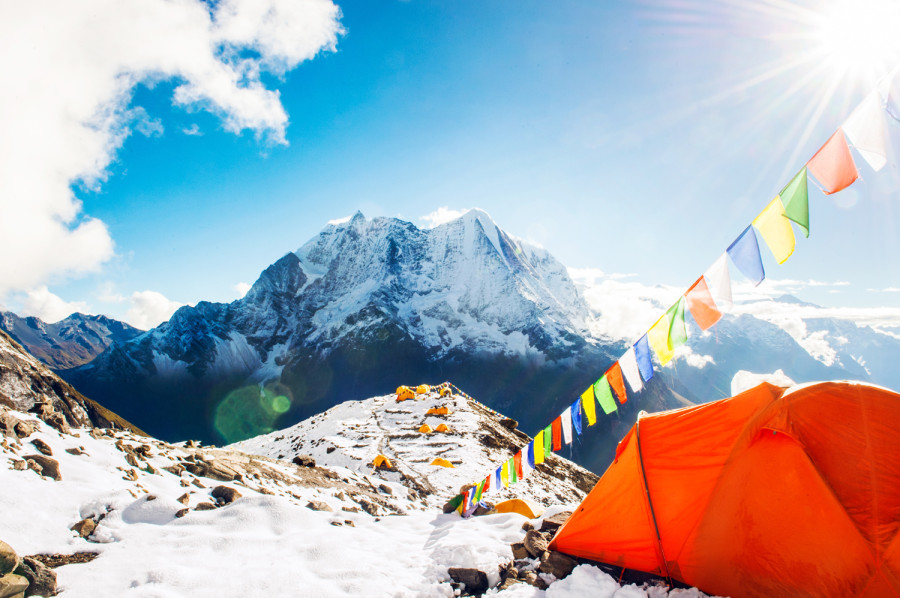Money
Zero climbing fees to boost Visit Nepal 2020
The government aims to lure climbers and promote peaks which have received little attention.
Sangam Prasain
The government plans to slash climbing fees and even waive them completely for some Himalayan peaks in a bid to lure mountaineers during Visit Nepal 2020.
The Department of Mountaineering, which issues climbing permits, said no fees would be charged for Cho Oyu, the sixth highest mountain in the world at 8188 metres.
Read: Climbing Everest will now require a full medical history, insurance and a certificate
Permits to climb Dhaulagiri (8167 metres) and Kanchanjunga (8586 metres) will be issued at a 50 percent discount, said Meera Acharya, director at the department.
The climbing fee for Everest, the world’s tallest mountain, has been set at $11,000 per person in the spring season. The charge for other eight-thousanders has been set at $1,800 per person.
No climbing fee will be charged for mountains like Api, Saipal, Ganesh Himal, Gyalzen Peak and others, said Acharya.
“We have sent the proposal to reduce and waive climbing permit fees to the cabinet for its approval,” said Acharya. The much-hyped Visit Nepal 2020 campaign is targeting 2 million arrivals to Nepal next year.
“This scheme is intended partly to lure climbers to visit Nepal and partly to promote peaks which have received little attention from mountaineers,” said Acharya.
The government is also introducing a set of new rules in an attempt to improve the safety of climbers on Nepal’s mountains, including Everest, following the death of nine people on the world's highest peak this year, the highest number of casualties during a single season in the past four years.
All climbers seeking a permit to climb Everest will now need to disclose their full medical history, and submit a medical report by a certified doctor in order to obtain a permit to climb mountains in Nepal.
The rules, which will come into effect from the next spring climbing season, were drafted in an effort to allow only climbers in good health to attempt the high-altitude challenge after a number of climbers died on Everest this year.
In 2014, the government opened 104 peaks to commercial expeditions, including five eight-thousanders—Kanchanjunga South (8476 metres), Kanchanjunga Central (8473 metres), Lhotse Middle (8413 metres), Lhotse Shar (8400 metres) and Kanchanjunga Yalung Khang West (8077 metres)—but it has not been officially recognised by the World Mountaineering and Climbing Federation, according to Nepali mountaineering officials.
The number of peaks open for commercial climbing, including eight-thousanders, has reached 414. Among them, 72 are higher than 7000 metres.
According to a study conducted by the government and the Nepal Mountaineering Association, there are 3,310 walking and climbing peaks above 5500 metres in Nepal. The government estimates that there are more than 1,600 virgin summits in the Nepal Himalaya.




 5.39°C Kathmandu
5.39°C Kathmandu













%20(1).jpg&w=300&height=200)
